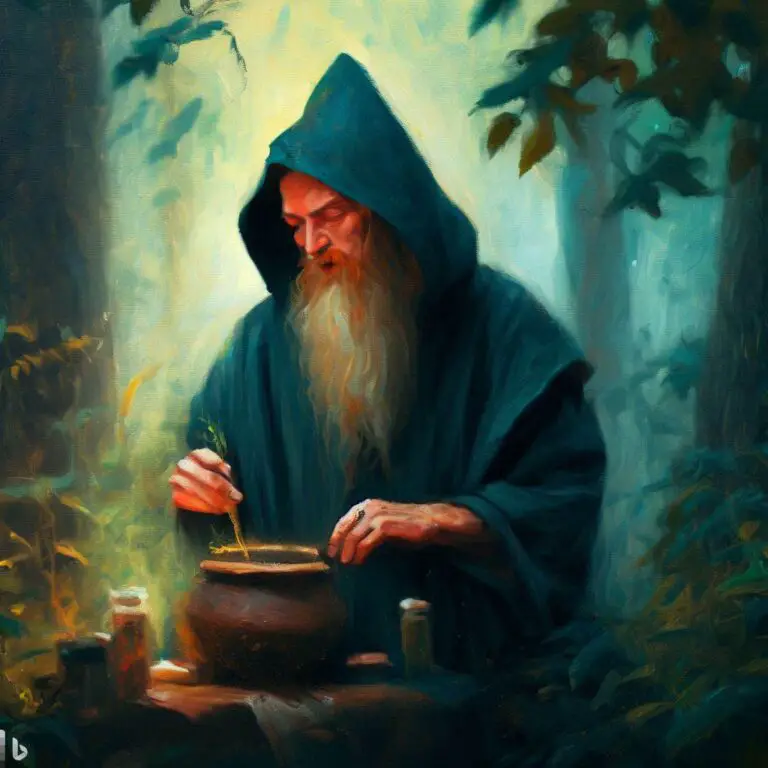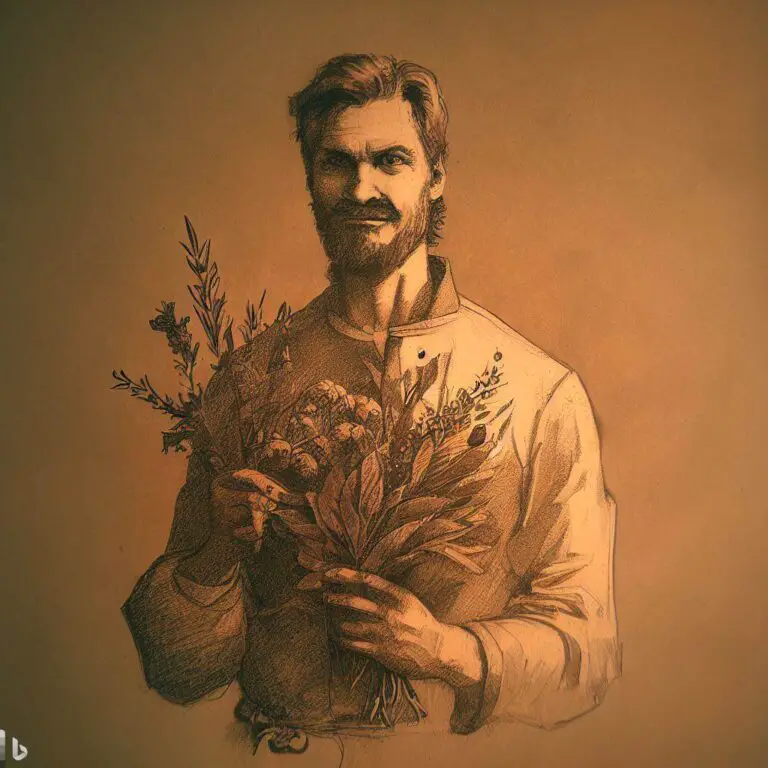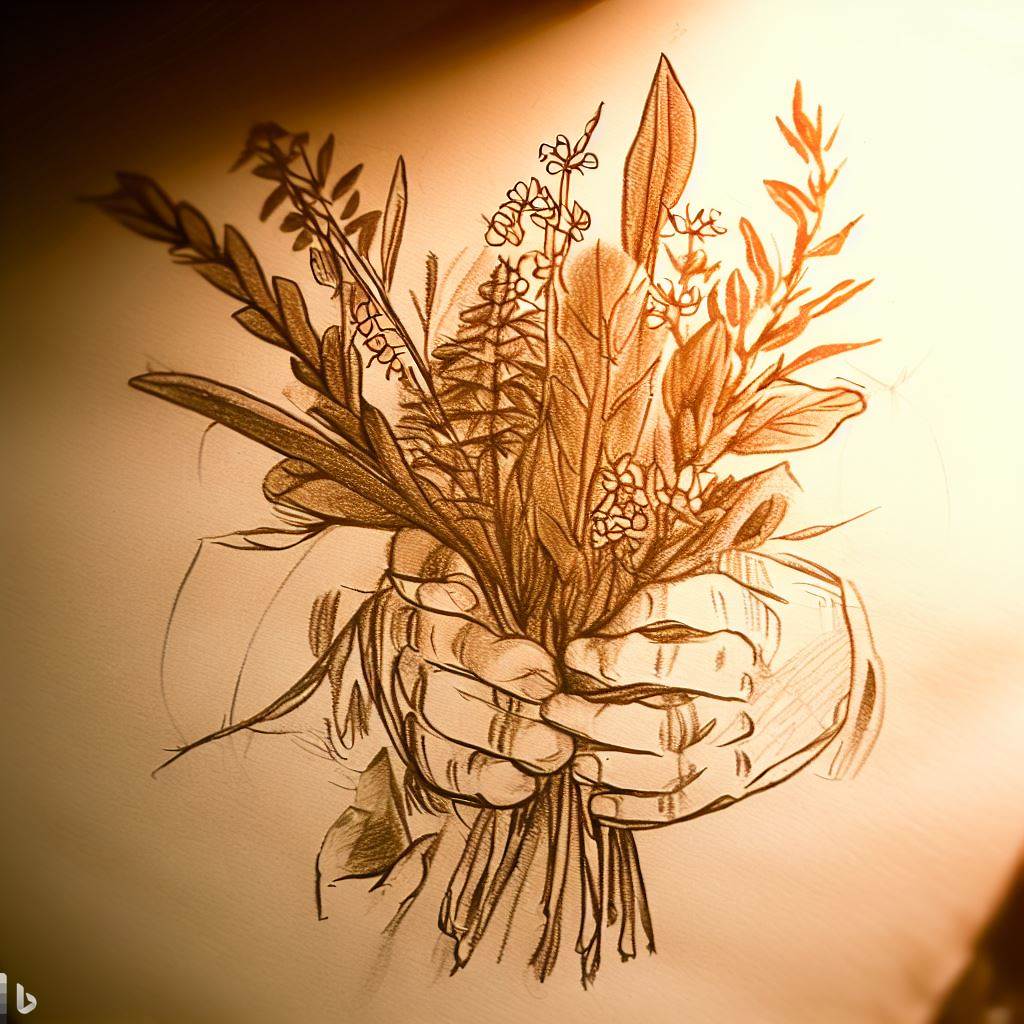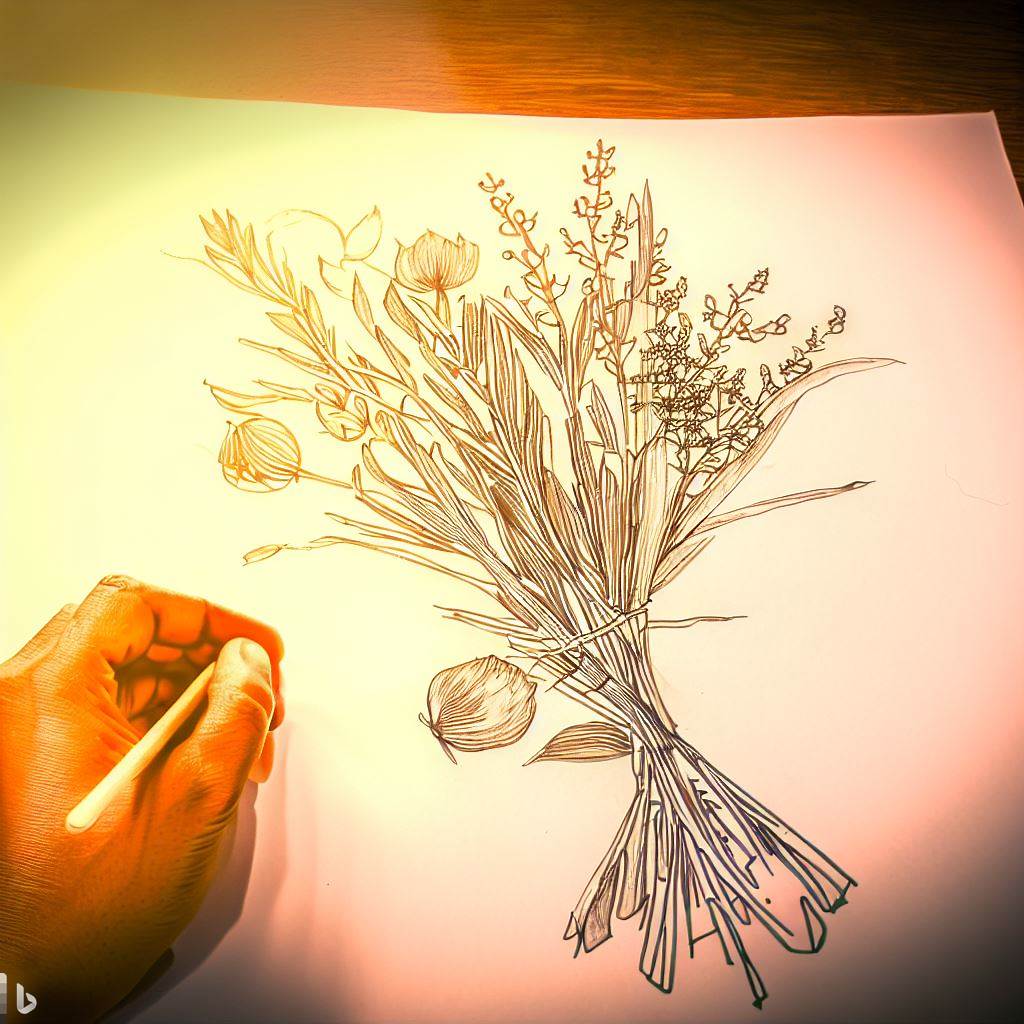Introduction
Herbs have been cherished for centuries for their remarkable healing properties and the wide array of beneficial substances they contain. These natural wonders are abundant sources of vitamins, minerals, antioxidants, essential oils, and other bioactive compounds that can positively impact our health and well-being. From soothing digestive issues to boosting the immune system, relieving stress, improving cognitive function, and promoting overall vitality, herbs offer a holistic approach to maintaining a balanced and healthy lifestyle.
The effectiveness of herbs lies in their active constituents, which vary from plant to plant. These active substances, such as alkaloids, flavonoids, terpenes, and phenolic compounds, interact with our bodies in unique ways, supporting various physiological processes and helping to address specific health concerns. For instance, chamomile contains chamazulene, which possesses anti-inflammatory properties, while garlic is rich in allicin, a potent antimicrobial compound. By harnessing the power of these natural substances, herbs have the potential to complement conventional treatments and promote overall wellness.
It’s important to note that the potency and therapeutic benefits of herbs can vary depending on factors such as plant species, cultivation methods, harvesting techniques, and storage conditions. Proper handling and storage of dried herbs are crucial to preserve their valuable compounds and ensure their efficacy when used for medicinal or culinary purposes.
In the following sections, we will explore the significance of proper packaging and storage methods for dried herbs, helping you make the most of these precious botanical treasures. So, let’s dive into the world of herbs and discover the best practices for maintaining their potency and enhancing their health-promoting effects.
If you’re an herb enthusiast or someone interested in harnessing the therapeutic benefits of herbs, it’s crucial to understand that the quality and potency of these natural remedies greatly depend on how they are handled after drying. In this article, we will delve into the various types of containers suitable for different herbs, essential precautions to ensure longevity and efficacy, and the optimal storage conditions for maintaining their freshness and aroma. So, let’s explore the art of preserving dried herbs to maximize their medicinal value and culinary delight.

Maximizing Therapeutic Potential through Proper Techniques and Knowledge
Gettin’ the most of it
The composition of these substances depends on the method of collection, use, and processing, which can vary depending on the season and even the time of day. For these reasons, it is necessary to strictly adhere to the rules of collection and processing. The person collecting the herbs should familiarize themselves with the botanical characteristics of the collected herbs in order to distinguish and identify the parts that have therapeutic significance and will be collected as raw material for medicinal use, as well as to find specific recommendations regarding collection, use, and storage.
Health and Hygiene in Preserving Medicinal Integrity
Only a healthy person should engage in the collection and processing of herbs, as other diseases could be transmitted to the recipient through the raw material. It is also important to observe conditions of absolute cleanliness. After all, these are the raw materials used to prepare medicines for sick people.
Optimal Harvesting Conditions
When it comes to collecting herbs, the choice of the right time and weather conditions plays a crucial role in preserving their quality and effectiveness. It is recommended to gather herbs on sunny, rainless days, taking advantage of the optimal conditions provided by nature. During these times, the herbs are at their prime, containing the highest concentration of beneficial substances.
Ideally, the collection should take place after the dew has evaporated or in the morning, before the evening dew settles in. This timing ensures that the plants are dry and free from excess moisture, which can contribute to the growth of mold or the degradation of their medicinal properties.
On the contrary, it is best to avoid collecting herbs on rainy or frosty days. In such conditions, the plants tend to absorb more water, and their leaves become saturated. This excess moisture not only makes the drying process longer but also affects the quality of the final product. Herbs collected on rainy or frosty days may turn dark and dry slowly, losing their potency and aromatic qualities.
By being mindful of the weather conditions and choosing sunny, rainless days for herb collection, you can ensure that the raw materials you gather are of the highest quality. This attention to detail and adherence to proper harvesting practices will contribute to the potency and effectiveness of the herbal remedies you prepare, allowing you to harness the full potential of nature’s healing power.
Key Techniques for Harvesting Plants
Roots (Radix) and rhizomes (Rhizoma)
Roots (Radix) and rhizomes (Rhizoma) are usually collected in late autumn (after the green parts have withered), but most often in early spring, before the plant has produced leaves, when they accumulate valuable therapeutic components. After digging them up, the raw material should be thoroughly cleaned of soil and small roots, rinsed, sometimes peeled or cut into smaller parts for drying.
Bark (Cortex)
Bark (Cortex) should be collected from two-year-old plants in early spring, from cut branches. Directly collecting from trees causes them to rot or decay, resulting in the death of the plant. The bark should be cut crosswise and lengthwise. After removal, it appears as incomplete tubes.
Flower (Flos)
Flower (Flos). This term refers to the herbal material consisting of individual flowers or entire clusters, known as inflorescences (Inflorescentia), or just the corolla petals, plucked from the calyx (e.g., mullein).
Flowers should be collected at full bloom (never wilted), when they have reached their natural color and normal size, throughout the blooming period.
Each flower is taken separately (using the thumb and forefinger), tilted and quickly pulled upward; inflorescences are cut with scissors or secateurs. Flowers from trees or tall shrubs are often plucked from previously cut branches or large stems. If only the flower petals are used as the herbal material, they are gently plucked and collected in baskets.
Leaves (Folium)
Leaves (Folium). Only vibrant green leaves (not yellowed or old), healthy, undamaged, and free from spots (usually caused by parasites) are suitable for collection, once they are fully developed (except for birch leaves, which are collected when freshly opened and covered in resin), with or without petioles. Not all leaves should be removed from the plant, but at most one-third, as removing too many leaves would weaken or kill the plant. Sometimes, if there is a mass occurrence of leaves at the collection site, they can be mowed. Lingonberry leaves are picked from cut, dried stems. The best time to collect leaves is before the plant blooms.
Herb (Herba)
Herb (Herba). This is the above-ground part of the plant. It is usually collected during the full flowering period (with the exception of some plants like horsetail). The upper green part with the stem is selected. When collecting the entire herb, care must be taken to ensure it is not contaminated with weeds, especially bindweed. Plants with thin stems are cut just above the ground, while those with thick stems are only trimmed at the top. Herb should not be torn off by hand, as this often uproots the plant.
Fruit (Fructus) and seed (Semen)
Fruit (Fructus) and seed (Semen). Fruits are collected when they are ripe or unripe, never when overripe. The best time for collection is the beginning of ripening. Fleshy fruits, such as barberry or blackberry, are collected on dry and sunny days. This prevents them from rotting and molding. On the other hand, dry fruits (commonly called seeds), such as cumin, dill, and coriander, are collected on cloudy days and before the dew dries, as they do not scatter during that time. Usually, we cut the entire herb or the top part, tie them into bundles, and thresh them on spread-out sheets after drying.

Techniques, Temperature, and Airflow for Optimal Preservation
Drying herbs is an essential step in preserving their potency and extending their shelf life. There are two primary methods for drying herbs: natural drying in the open air and using heated drying chambers.
Quality
The drying process plays a crucial role in preserving the quality and medicinal properties of herbs. The method chosen for drying has a direct impact on the retention of active compounds present in the raw material. When herbs are exposed to sunlight or excessive heat during drying, there is a risk of degradation and loss of beneficial components.
To ensure the highest quality of dried herbs, it is recommended to dry them in the shade. This approach helps to preserve the delicate balance of active compounds, such as essential oils, flavonoids, and other valuable constituents that contribute to the herb’s therapeutic effects.
By drying herbs in the shade, we minimize exposure to direct sunlight, which can lead to the breakdown of sensitive compounds and result in a loss of potency. Instead, a controlled drying environment with proper air circulation is maintained, allowing the herbs to gradually release moisture without compromising their medicinal properties.
Furthermore, it is essential to initiate the drying process as soon as possible after harvesting. Freshly harvested herbs contain a higher concentration of active compounds, and delaying the drying process could lead to their deterioration. Prompt drying ensures that the herbs retain their potency, aroma, and overall quality.
In addition to shade drying, certain herbs may benefit from specific drying techniques. Some herbs may require gentle heat, such as using a dehydrator or an oven set at a low temperature, to facilitate the removal of moisture while still preserving their medicinal values. However, it is important to exercise caution and closely monitor the drying process to prevent overheating and potential loss of beneficial compounds.
By understanding the significance of the drying method and employing appropriate techniques, herbal enthusiasts can ensure that their dried herbs maintain their therapeutic potential and contribute to effective herbal preparations. Remember, proper drying practices are essential for unlocking the full benefits of nature’s botanical treasures.
Airflow
When opting for natural drying, the air’s properties and flow rate are crucial factors. Air has the ability to absorb moisture, making its movement speed significant during the drying process. The airflow helps carry away the evaporating moisture from the herbs, promoting efficient drying. It’s important to find a location with good air circulation for natural drying, such as attics, sheds, empty barns, or well-ventilated living rooms.
Temperature
Temperature also plays a vital role in natural drying. Higher temperatures accelerate the evaporation of moisture from the herbs, leading to faster drying. Therefore, it’s important to choose a drying area with an appropriate temperature that allows for efficient moisture removal. Warmer environments will result in faster drying, as the air becomes saturated with water vapor more quickly. However, it’s essential to strike a balance and avoid excessively high temperatures that could damage the herbs’ delicate compounds.
Before starting the drying process, ensure that the drying space is clean and free from dust or contaminants that could affect the herbs’ quality.
Once prepared, herbs can be spread out in a thin layer on clean sieves, mats, paper, or cloth.
It’s important to avoid placing herbs directly on the floor or ground, as this can hinder airflow and potentially introduce dirt or impurities.
Depending on the herb type, different drying techniques may be employed. Some herbs, such as elderflower clusters or perforate St. John’s wort herb, can be hung on strings or threads. This allows for better airflow around the plant material and promotes even drying. Roots, on the other hand, can be threaded onto strings or threads for drying.
Certain herbs, particularly those containing volatile substances, require drying at specific temperature ranges. Generally, an elevated temperature between 35-60 degrees Celsius is suitable for drying most materials. However, herbs with volatile compounds should be dried at lower temperatures, typically ranging from 20-35 degrees Celsius. Careful attention should be paid to ensure the drying temperature remains within the appropriate range to preserve the herbs’ medicinal properties.
For those who prefer to dry herbs in home settings, kitchen trays or ovens can be utilized. Simply spread the herbs out in a thin layer on trays lined with paper, allowing for proper airflow and even drying.
Shelf-Life
By carefully selecting the drying method and considering factors like airflow, temperature, and suitable drying locations, herbal enthusiasts can effectively dry herbs while preserving their beneficial qualities. Proper drying techniques contribute to the production of high-quality herbal products and ensure a more extended shelf life for the harvested herbs.
How it should look like: Packing and Storing Tips
Looks
Well-dried raw material has a natural color, with only very few herbs changing colors (such as mallow). Dried leaves crumble in the fingers, stems crack, and fruits should not clump together when crushed.
Packing
Dried raw materials should be packaged as quickly as possible. There are several types of packaging. Raw materials that easily absorb water and have aromatic properties (such as lily of the valley herb, lemon balm leaves, or white jasmine flowers) are stored in airtight glass or metal containers. Most herbs can be stored in semi-sealed packaging (such as boxes or cartons lined with parchment, multi-layered paper bags, or canvas bags), or in regular (such as paper bags, cartons) or breathable packaging (such as baskets, or linen bags).
Herbs should be packed carefully, lightly pressing them.
Labeling
Each package should have a label attached with the name of the raw material and the date of harvest written on it. Raw materials stored for more than a year are usually devoid of medicinal value.
Storing
Herbs should be stored in dry, well-ventilated places away from strong odors. They should be protected from contamination by animals, especially insects.
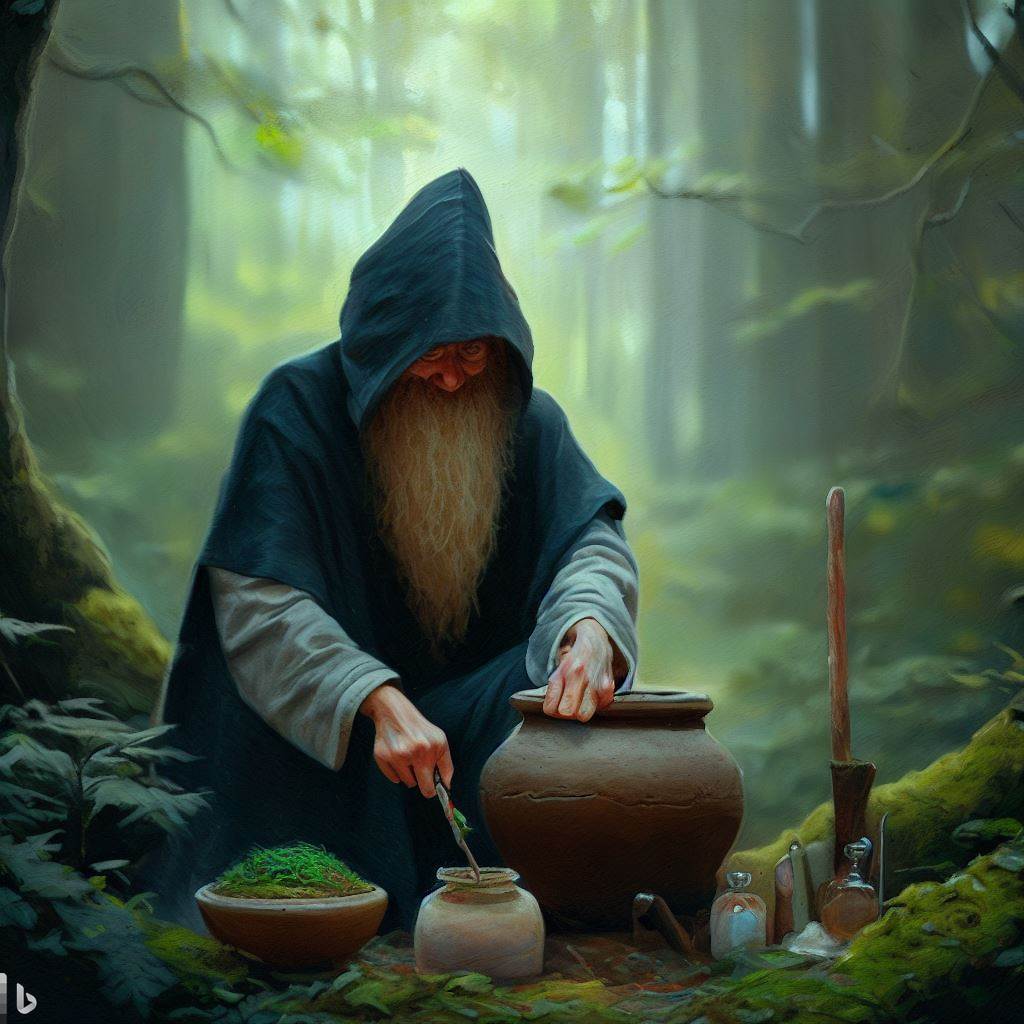
Summary
In this comprehensive guide, we provided you with essential practices for handling herbs to unlock their full medicinal potential.
You learned about the optimal timings and environmental conditions for collecting various plant components, such as roots, bark, flowers, leaves, herb, fruits, and seeds.
You explored the two primary drying methods: natural air drying and using heated drying chambers. You understood the critical factors, including airflow and temperature, that influenced the drying process.
You discovered suitable drying sites and materials that would help you preserve the quality and maximize the therapeutic properties of herbs.
With this knowledge, you could elevate your herbal practices and harness the full benefits of these natural remedies 😉

